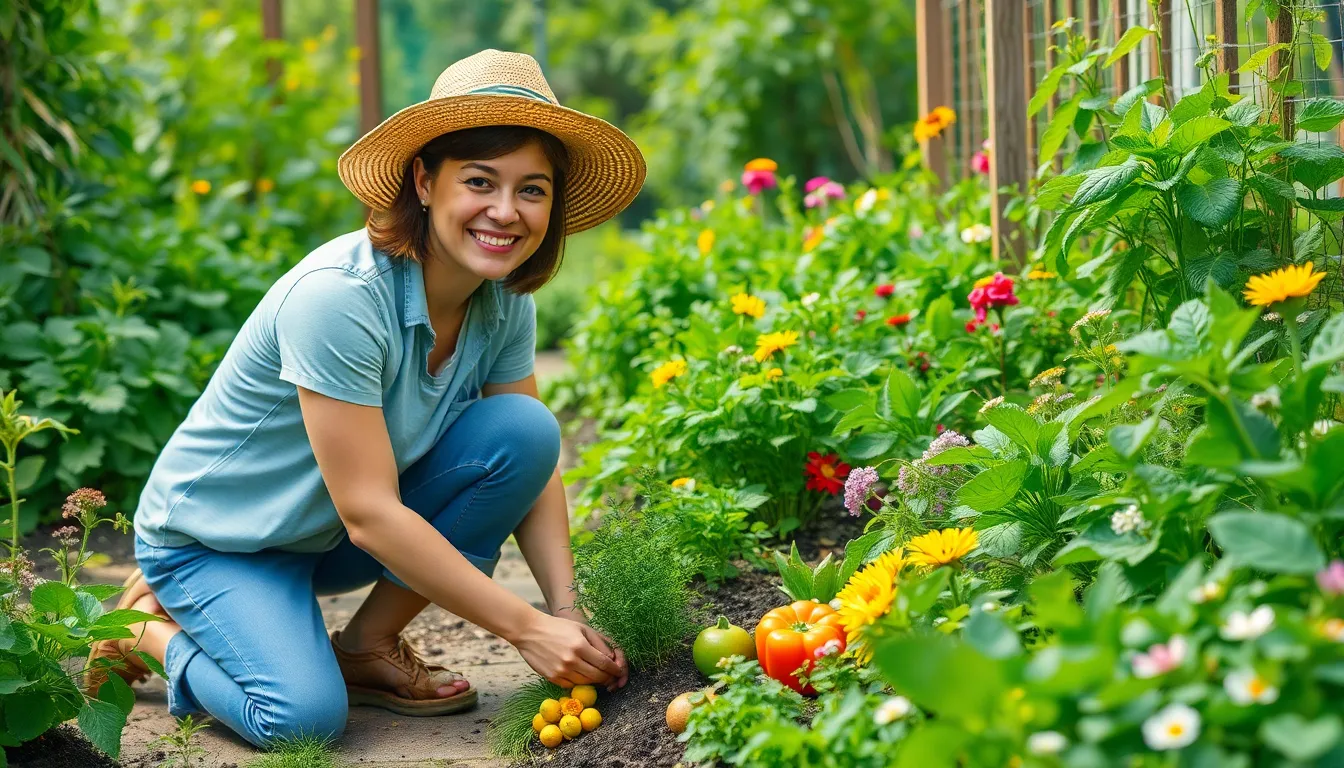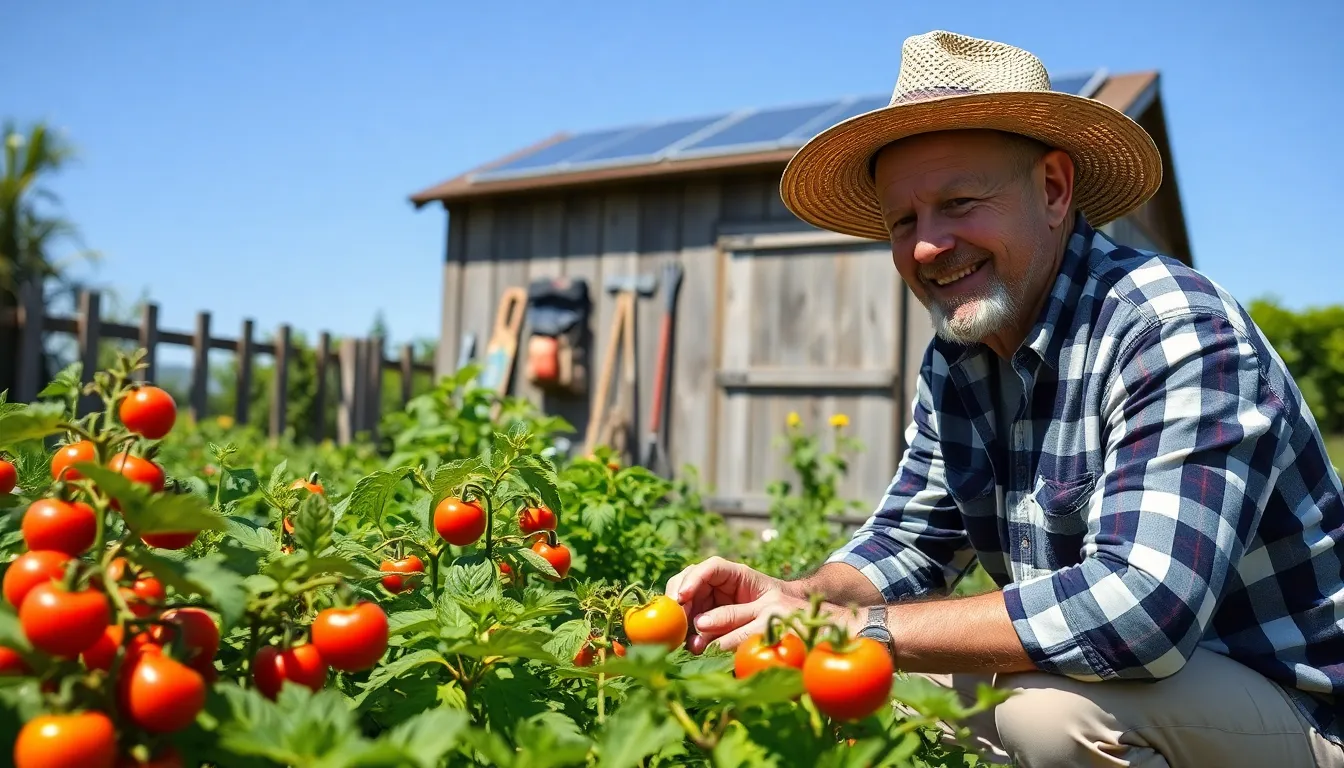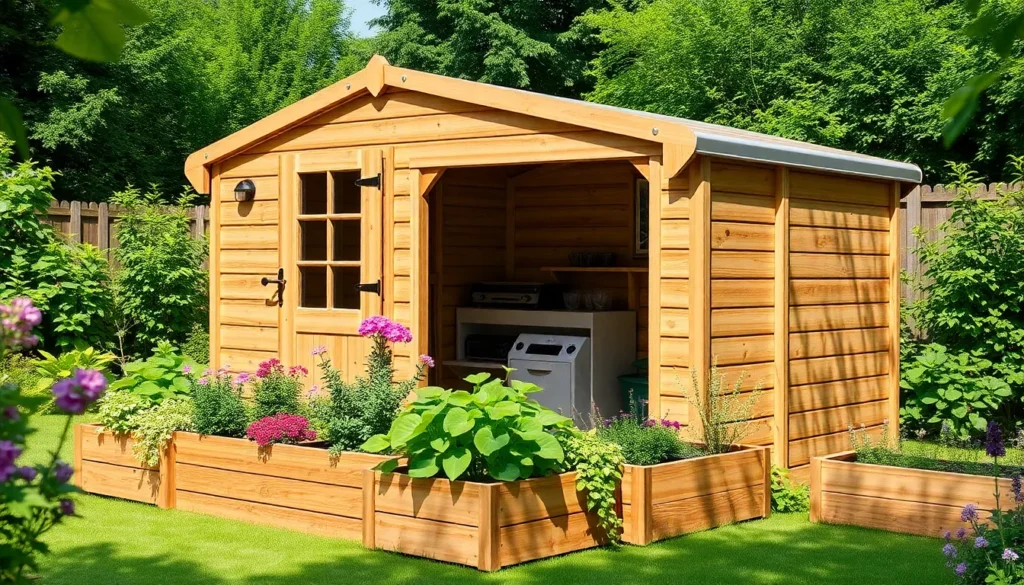Imagine waking up to the sound of birds chirping instead of alarm clocks blaring. Picture a life where your garden supplies fresh veggies, and your solar panels keep the lights on—no more battling with utility bills. Self-sustainable living isn’t just a trend; it’s a lifestyle that promises freedom, fun, and a sprinkle of eco-friendly magic.
Table of Contents
ToggleWhat Is Self Sustainable Living?
Self sustainable living focuses on creating an independent lifestyle that meets one’s needs without relying excessively on external resources. Individuals achieve this through practices such as growing their own food, generating energy, and managing waste efficiently. Emphasis on self-sufficiency leads to reduced environmental impact, promoting a sustainable future.
Growing vegetables in home gardens represents a common practice, allowing people to enjoy fresh produce. Consider fruits, herbs, and vegetables yielding crops year-round with proper planning and cultivation techniques. Energy independence can be achieved via solar panels, wind turbines, or other renewable technologies. These systems not only reduce utility costs but also provide energy security.
Community involvement plays a vital role in self sustainable living. Joining community gardens or local food cooperatives fosters collaboration and knowledge exchange. Sharing resources within these groups enhances self-sufficiency and creates a supportive network focused on sustainability.
Waste management is another critical aspect. Composting organic waste enriches soil and reduces landfill contributions. Utilizing recycling programs and minimizing single-use products further decreases environmental footprints.
Central to this lifestyle is the awareness that self sustainable living can benefit personal health and well-being. Reduced pesticide exposure from home-grown foods enhances overall health. By engaging with nature, individuals often experience improved mental health, reducing stress in their daily lives.
Self sustainable living describes a holistic approach that encompasses various aspects of life. People adopt these practices to create a more meaningful relationship with nature, resources, and their communities.
Benefits of Self Sustainable Living

Self-sustainable living presents numerous advantages that impact personal lifestyle, community welfare, and the environment. Embracing this lifestyle leads to a more fulfilling existence while supporting ecological balance.
Environmental Impact
Self-sustainable lifestyles significantly reduce reliance on nonrenewable resources. Practices such as growing food in home gardens and adopting renewable energy sources decrease carbon footprints. Composting organic waste nurtures soil health and minimizes landfill overflow. Water conservation methods, like rainwater harvesting, enhance local ecosystems. Engaging with nature fosters a deeper appreciation for environmental stewardship. As communities embrace sustainability, collective efforts amplify positive ecological outcomes.
Economic Advantages
Financial savings emerge as a significant benefit of self-sustainable living. Growing one’s food leads to lower grocery bills and reduced dependence on commercial agriculture. Lower energy costs result from harnessing renewable energy technologies like solar panels. Home waste management practices also cut disposal costs while promoting recycling initiatives. Additionally, engaging in local barter systems enriches communities and strengthens economic interdependencies. Ultimately, this commitment to sustainability creates a more resilient financial future while fostering personal autonomy.
Key Principles of Self Sustainable Living
Self-sustainable living revolves around essential practices that promote independence and environmental benefit. These principles guide individuals in adopting a more sustainable lifestyle.
Reduce, Reuse, Recycle
Reducing waste minimizes environmental impact. It starts with cutting back on single-use products and opting for durable alternatives. Reusing items extends their life, avoiding unnecessary purchases. Recycling transforms materials like paper, glass, and plastics into new products, conserving resources and energy. Communities often provide resources and guidelines for effective recycling, enhancing collective efforts in waste management. By integrating these practices into daily routines, individuals contribute to a circular economy, fostering sustainability.
Energy Efficiency
Energy efficiency plays a critical role in self-sustainable living. Utilizing energy-efficient appliances lowers consumption and reduces monthly bills. Investing in proper insulation keeps homes comfortable while minimizing energy loss. Implementing smart home technology allows for better monitoring and control of energy usage. Renewable energy sources like solar panels provide sustainable power, reducing reliance on fossil fuels. These combined efforts lead to significant decreases in energy consumption and carbon emissions.
Local Food Production
Local food production enhances self-sustainability and supports community health. Growing fruits and vegetables at home improves access to fresh produce. Engaging in community gardens promotes collaboration and shared resources, creating bonds among neighbors. Participating in farmer’s markets strengthens local economies and ensures a diverse food supply. Additionally, practicing permaculture techniques encourages ecological balance and soil health. Through local food initiatives, individuals actively contribute to reducing transportation emissions and fostering food security.
Practical Steps to Achieve Self Sustainable Living
Achieving self-sustainable living involves intentional choices across various aspects of life. Following these practical steps can lead to greater independence and environmental responsibility.
Home Energy Solutions
Investing in renewable energy sources fosters energy independence. Solar panels generate electricity with minimal environmental impact, while wind turbines harness natural breezes. Utilizing energy-efficient appliances reduces overall consumption. Proper insulation enhances heat retention, which translates to lower energy bills. Engaging in community solar projects cultivates shared resources and reduces costs. Exploring battery storage systems provides a backup energy solution for homes that rely heavily on renewables.
Water Conservation Techniques
Implementing water-saving practices preserves this vital resource. Rainwater harvesting systems collect runoff from roofs for irrigation and other uses. Efficient irrigation methods like drip systems minimize waste while ensuring plants receive adequate moisture. Installing low-flow fixtures reduces water consumption without sacrificing performance. Mulching around plants retains soil moisture and reduces evaporation. Lastly, educating community members on the importance of water conservation can create a ripple effect, encouraging broader adoption of these practices.
Sustainable Gardening Practices
Integrating sustainable gardening practices promotes food security and environmental health. Starting with organic seeds eliminates the use of harmful pesticides and encourages biodiversity. Companion planting maximizes space and improves harvest yields. Composting kitchen scraps enriches soil while reducing landfill waste. Mulching suppresses weeds and retains moisture during dry seasons. Adopting crop rotation reduces pest build-up and maintains soil fertility. Participating in local food cooperatives strengthens community ties and supports local economies, fostering resilience.
Challenges of Self Sustainable Living
Self-sustainable living comes with various challenges that require careful consideration. Identifying these challenges helps individuals prepare for a more secure and resilient lifestyle.
Initial Costs and Investments
Initial costs often create barriers for those interested in self-sustainable living. Building a solar panel system or installing rainwater harvesting systems requires significant financial investment. Expenses extend to purchasing seeds, soil amendments, and composting supplies for sustainable gardening practices. Individuals face upfront costs for energy-efficient appliances, proper insulation, and renewable energy installations. Financial planning becomes essential to manage these costs effectively. Long-term savings can offset initial investments but entail patience and commitment from those embarking on this lifestyle.
Knowledge and Skills Gap
Knowledge and skills play a critical role in achieving self-sustainable living. Many individuals lack the expertise needed for gardening, energy generation, or waste management. Learning about organic farming practices requires time and dedication. Individuals must also understand local regulations regarding renewable energy and water use. Online resources, workshops, and community classes help bridge these gaps. Sharing experiences through community support networks fosters continuous learning and encourages development of practical skills. Engaging with local gardening clubs or sustainability groups often provides useful insights and valuable partnerships.
Embracing self-sustainable living transforms daily life into a harmonious blend of independence and environmental stewardship. By cultivating gardens and harnessing renewable energy, individuals create a lifestyle that not only meets their needs but also nurtures the planet.
This approach fosters community connections and promotes well-being through active engagement with nature. While challenges exist, the long-term benefits of reduced costs and improved health make the journey worthwhile.
Ultimately, self-sustainable living isn’t just a choice; it’s a commitment to a more resilient future for everyone.










